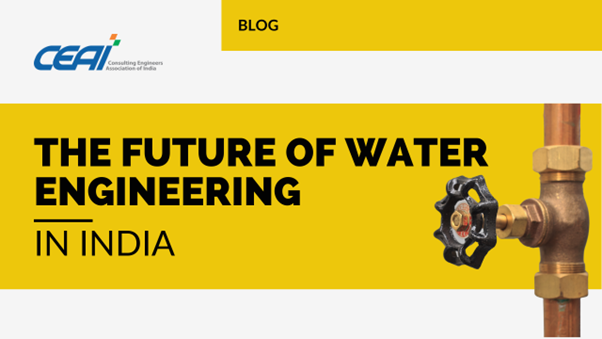
India is facing a significant water crisis, with demand for water projected to exceed supply by 2030. Water engineering, which involves the design and management of water resources, is becoming increasingly important in India as the country seeks to ensure that it has adequate supplies of clean water for its growing population.
In response to this challenge, the Indian government has launched several initiatives aimed at promoting sustainable water management practices and increasing access to clean water. One such initiative is the National Water Mission, which aims to conserve water, minimize wastage, and ensure equitable distribution of water across the country. The mission sets ambitious targets for reducing water consumption in various sectors, increasing the efficiency of water use, and promoting the use of alternative sources of water.

Another initiative is the Atal Bhujal Yojana, a groundwater management scheme launched by the government in 2019. The scheme aims to promote sustainable management of groundwater resources in areas facing high levels of water stress, by encouraging community participation and adopting a demand-driven approach.
Challenges Facing Water Engineering in India
One of the primary challenges facing water engineering in India is the increasing demand for water. As the population grows and the economy develops, the demand for water is projected to rise sharply. At the same time, climate change is exacerbating water scarcity, with changes in rainfall patterns and increased evaporation rates leading to reduced water availability. Additionally, poor water management practices and inadequate infrastructure are contributing to the problem, with significant amounts of water lost through leakages and inefficient delivery systems.

Another challenge facing water engineering in India is pollution. Many of the country’s rivers and other water bodies are contaminated with industrial waste, agricultural runoff, and untreated sewage. This pollution has significant impacts on human health and the environment and is a major obstacle to achieving sustainable water management.
Opportunities for Water Engineering in India
Despite the sector’s challenges, there are also significant opportunities for water engineering in India. One of the most promising areas is the use of technology to improve water management practices. For example, advanced sensors and data analytics can be used to monitor water quality and detect leaks in distribution systems, allowing for more efficient and effective management of water resources. Similarly, the use of remote sensing and satellite data can help to identify areas of water stress and guide the allocation of resources.

Another opportunity for water engineering in India is the development of alternative sources of water. Desalination, for example, has the potential to provide a reliable source of freshwater in coastal regions, while rainwater harvesting and groundwater recharge can help to supplement traditional sources of water.
Finally, there is significant potential for public-private partnerships (PPPs) to drive innovation and investment in the water sector. PPPs can bring together the strengths of the public and private sectors, leveraging public resources to attract private investment and expertise. This can help to improve the efficiency and effectiveness of water management practices and ensure that infrastructure is developed in a sustainable and responsible manner.
Conclusion

The future of water engineering in India is both challenging and full of opportunities. While the country is facing a significant water crisis, with increasing demand and pollution, there are also significant opportunities for innovation and investment in the sector. By leveraging technology, developing alternative sources of water, and fostering public-private partnerships, India can ensure that it has adequate supplies of clean water to support its growing population and economy. The future of water engineering in India is critical to the country’s sustainable development, and it is essential that stakeholders work together to address the challenges and seize the opportunities presented by this important sector.
